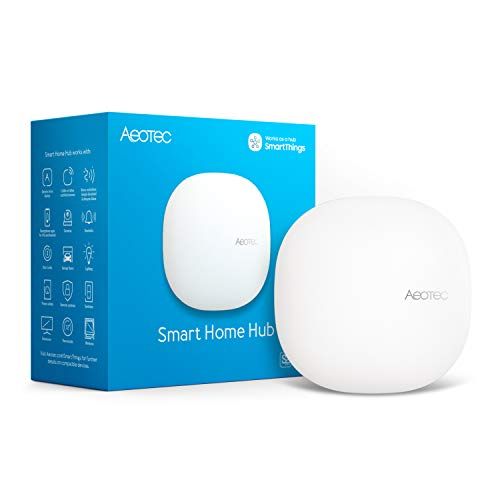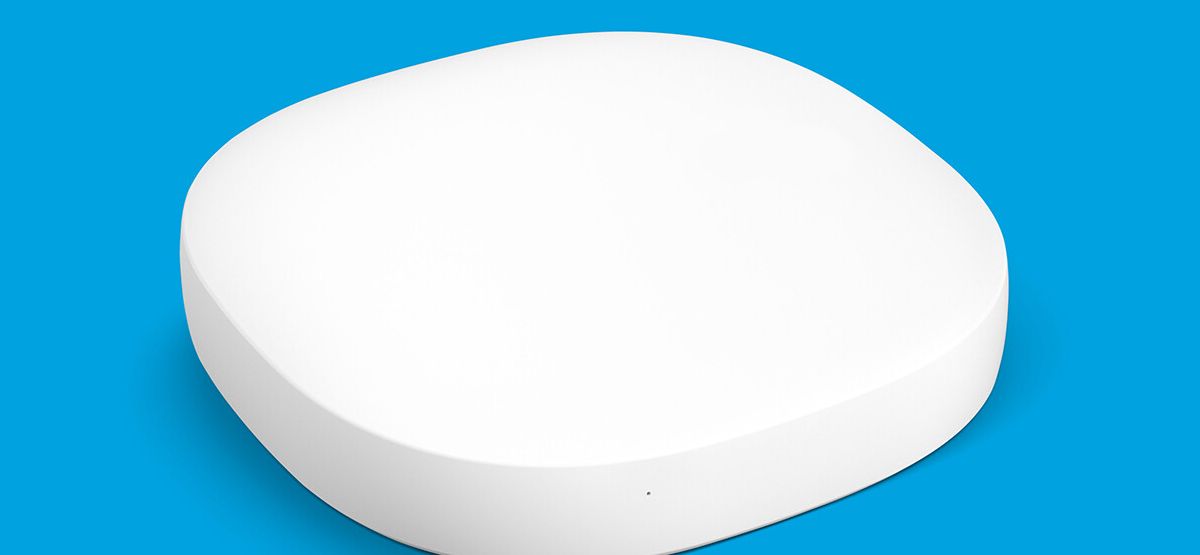Quick Links
Getting started with smart home technology is daunting. There are many different paths you can go down. A common component of smart homes is the central "hub." What exactly is a smart home hub, and do you need one?
Deciding whether you need a hub is just one of the many choices that you have to make when building your smart home. It's arguably one of the bigger choices that you'll have to make, though, as it has a big effect on the devices that you can add to your home. We'll explain what a smart home hub is so that you can decide whether you should go down that path.
Let's Talk Protocols
When it comes to smart homes, a number of different protocols can be used. These protocols are what decides how the devices in your home connect and how they can be controlled. For our purposes, there are three protocols that most smart home owners should understand.
The first is what you'll find in many of the basic smart home gadgets: Wi-Fi. These devices, which include light bulbs, switches, outlets, and many typical smart home things, connect to the wireless network in your home.
Each one of the devices is on your Wi-Fi, and that is how it communicates with the app on your phone or the Alexa or Google Assistant smart speaker. All you need to set up these devices is your Wi-Fi password. You don't need any additional hardware.
The other two protocols are Z-Wave and ZigBee, and these are what typical smart home hubs use. These protocols are wireless as well, but they don't use Wi-Fi. Z-Wave and ZigBee devices create a "mesh network" that allows them to communicate with each other. This means that you're not limited to the range of your router.
Instead of every device being on your Wi-Fi network and communicating independently, Z-Wave and ZigBee devices are all connected to the hub. The hub is the only thing connected to Wi-Fi. You communicate with the hub, which then sends commands to connected devices.
It's All Happenin' at the Hub
The term "hub" is the perfect description of what a smart home hub is. It's the centralized device that everything else in your smart home is connected to. When the hub goes down, so does your smart home. It's the heart of the system.
There are plenty of benefits and downsides to this type of setup. If you have dozens of smart home devices in your home, a hub allows you to keep them from crowding your Wi-Fi network. They connect to the hub rather than to your router.
This also makes it easier to add new devices to your smart home. With Wi-Fi devices, you usually need a third-party app and Wi-Fi credentials to get it set up. However, once you have a hub set up, it's just a matter of plugging in a new device and waiting for it to appear in the app for your hub.
Speaking of apps, this is another benefit of a hub. Wi-Fi devices typically require you to use third-party apps from the maker of the device. These apps are then what you use to control the devices. If you mix and match brands in your home (as many people do), you have a few different apps to remember.
Of course, there are ways that you can consolidate Wi-Fi devices into a single interface with something like the Google Home app (or Apple's Home app, for devices that support HomeKit). This requires extra work, however, and it's not always possible with every brand.
With a hub, everything can be done from one app. Devices are connected to the hub and then they show up in the app. You're always using the same familiar interface. Hub apps typically are more powerful as well, including tools for routines and complex automation.
Hubs Aren't Perfect
We're talking up hubs a lot here, but the truth is, they aren't without problems. Smart home hubs can be finicky, annoying devices at times. The hub controls everything, so if the hub goes down, your entire smart home is down.
That might seem like an obvious thing, and the same applies to Wi-Fi devices. No internet means that your smart home isn't very smart. The difference with a hub is that it can sometimes go down for other reasons. For example, if Samsung's SmartThings network goes down, the hub won't be able to connect to devices, even if your Wi-Fi is fine.
Like a lot of things, the more complexity you add to a system, the more chances there are for failures. Using a smart home hub opens you up to a whole new world of possibilities, but that does come with some extra challenges as well.
Do You Need a Hub in Your Smart Home?
The big question that many people have when starting a smart home is whether they should invest in a hub. You're looking at an extra upfront cost that seems to make things more complicated. How do you know if it's worth it?
The truth is, that's a very personal question. It really depends on the type of smart home that you're looking to create. Most people don't need to bother with a hub. If you just want a handful of smart light bulbs and switches, you don't need that extra complexity. Add a smart speaker and you have a pretty nice, simple system.
When you start getting into the more serious side of smart homes, that's when a hub becomes necessary. If you're thinking about replacing all the light switches in your home, adding motion sensors in multiple rooms, and building crazy projects like fake windows, you should probably look into a hub.
Which hub is the best? Well, that's another tough question to answer. There are several competing platforms available on the market today. The one that seems to have the broadest appeal is Samsung's SmartThings platform. It's been around for a long time, is backed by a major company, and supports many popular smart home brands.

Aeotec Smart Home Hub
A solid smart home system to start with if you decide your setup needs one.
A hub can make your smart home even smarter, but that doesn't mean that your home is dumb without one. It's up to you to decide how far down the rabbit hole you want to go.

